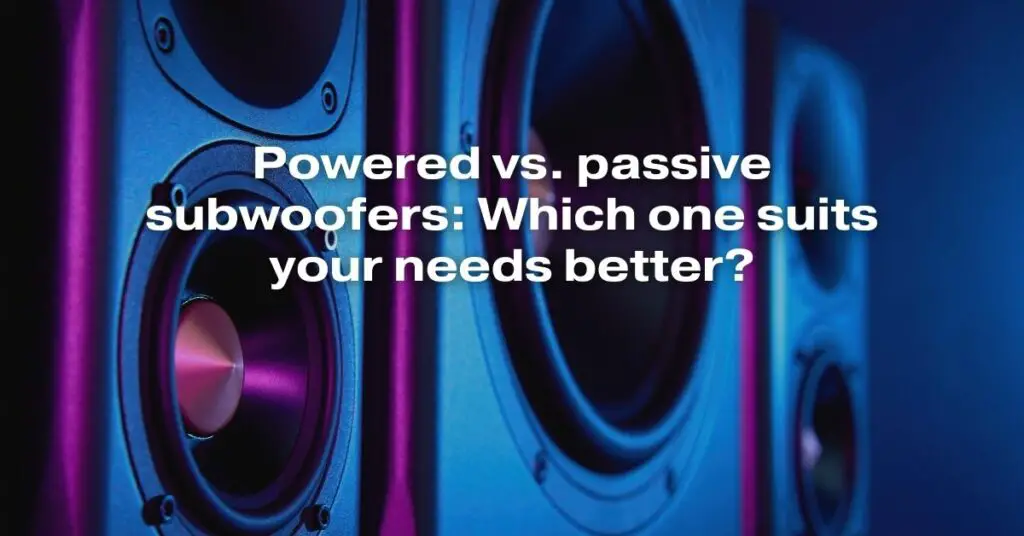When it comes to enhancing your audio experience, a subwoofer is an essential component that delivers the low-frequency sounds that add depth and impact to music and movies. However, choosing between a powered subwoofer and a passive subwoofer can be a daunting task, especially for those unfamiliar with the technical intricacies of audio equipment. This comprehensive guide will delve into the key differences between powered and passive subwoofers, helping you make an informed decision based on your specific needs and preferences.
Powered Subwoofers: Convenience and Simplicity
Powered subwoofers, also known as active subwoofers, come equipped with a built-in amplifier, eliminating the need for an external power source. This integrated design offers a significant advantage in terms of convenience and ease of setup. Simply connect the powered subwoofer to your audio source, such as a receiver or a preamplifier, and you’re ready to enjoy the enhanced bass response.
Powered subwoofers typically feature a range of controls that allow you to fine-tune the sound output to your liking. These controls may include volume, crossover frequency, and phase adjustment. Additionally, many powered subwoofers offer additional features such as equalization presets and room correction capabilities, ensuring optimal performance in your listening environment.
Passive Subwoofers: Flexibility and Customization
Passive subwoofers, unlike their powered counterparts, require an external amplifier to drive the speaker. This configuration offers greater flexibility in terms of system design and customization. You can choose an amplifier that matches your specific power requirements and preferences, allowing for a more tailored audio experience.
Passive subwoofers are often preferred by audiophiles and those seeking a more personalized setup. The ability to select a separate amplifier provides greater control over the sound output, enabling you to achieve a precise and refined bass response.
Making the Right Choice: Key Considerations
When deciding between a powered and a passive subwoofer, several factors should be taken into account:
Ease of Setup: If you prioritize simplicity and convenience, a powered subwoofer is the ideal choice. The integrated amplifier eliminates the need for additional components and simplifies the setup process.
Customization and Flexibility: If you seek greater control over your audio system and enjoy the process of fine-tuning your sound, a passive subwoofer offers more flexibility. You can select an amplifier that matches your specific needs and preferences.
Cost: Powered subwoofers generally have a higher upfront cost due to the integrated amplifier. However, they eliminate the need for an external amplifier, which can offset the initial expense.
Space Considerations: Powered subwoofers typically have a larger footprint due to the built-in amplifier. If space is a constraint, a passive subwoofer may be a better option.
Your Listening Preferences: If you primarily listen to music, a passive subwoofer may provide a more refined and customizable bass response. For movies and home theater applications, a powered subwoofer often delivers the impactful low-frequency effects that enhance the cinematic experience.
Conclusion: Finding the Perfect Fit
Ultimately, the choice between a powered and a passive subwoofer comes down to your individual needs and preferences. Consider your level of technical expertise, budget, space limitations, and listening habits to determine which type of subwoofer aligns with your requirements.
Whether you opt for the convenience and ease of a powered subwoofer or the flexibility and customization of a passive subwoofer, you’re sure to elevate your audio experience with the added depth and impact of a dedicated subwoofer.


